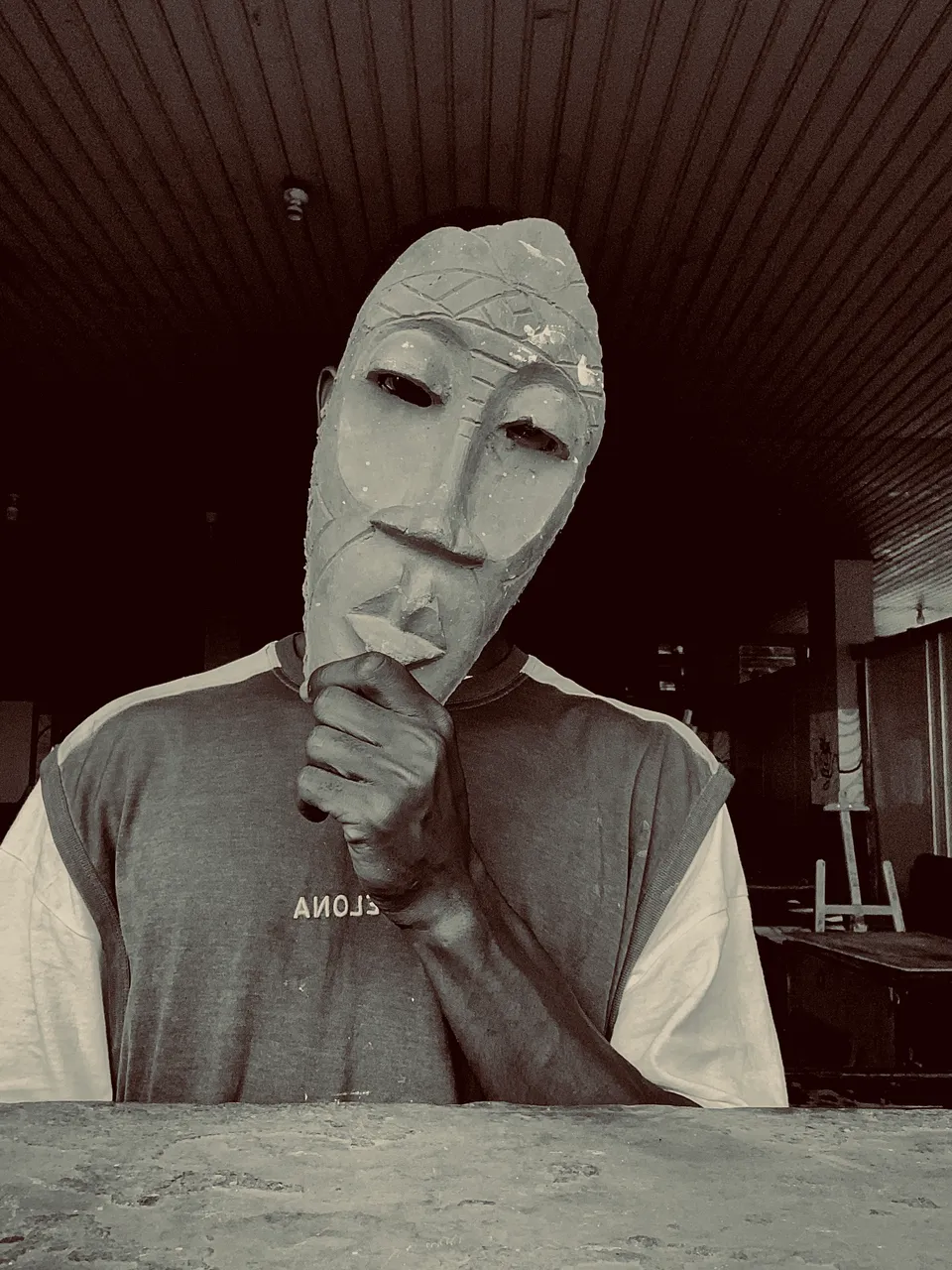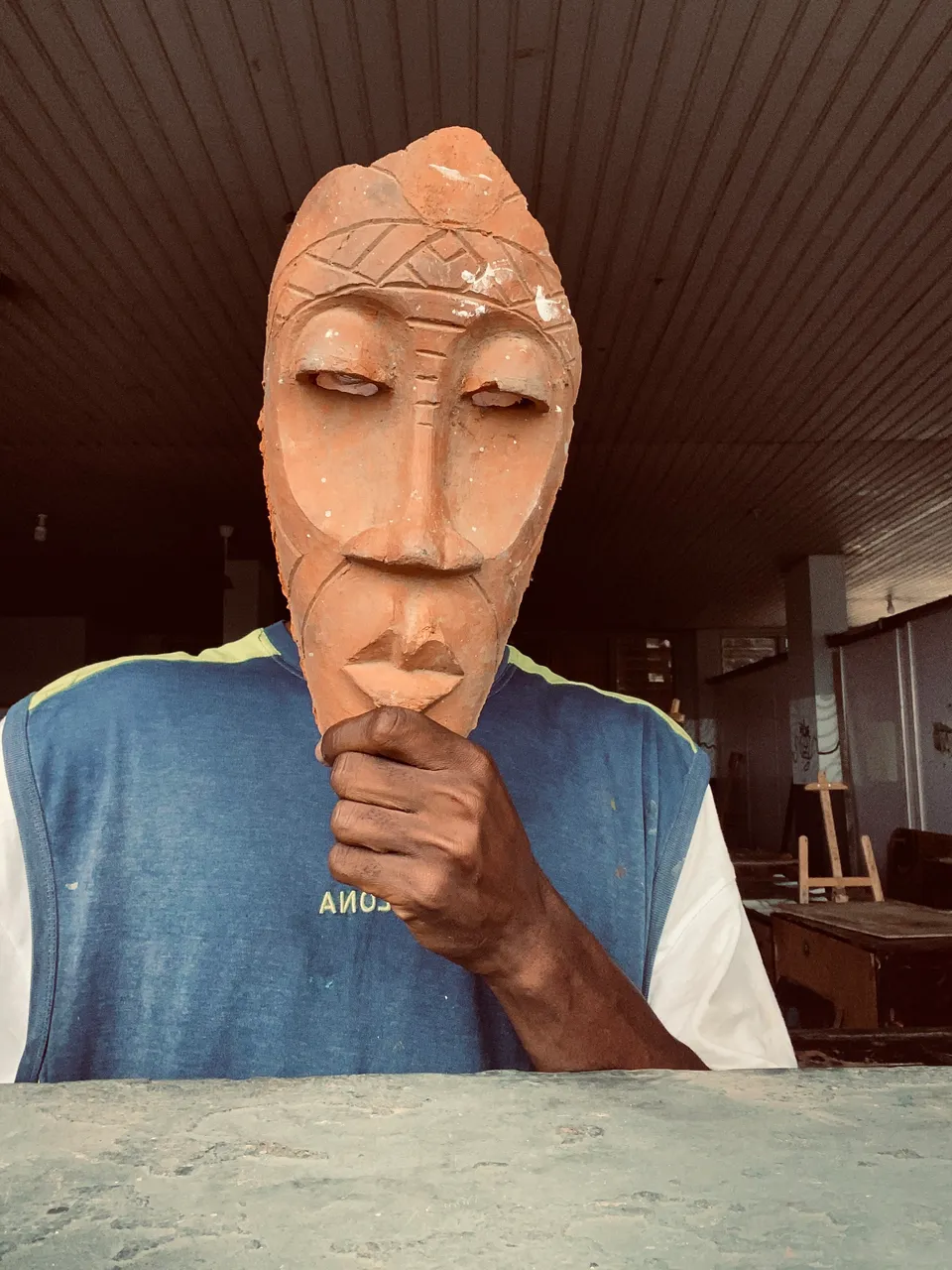
Clay allows for detailed sculpting and can be shaped to portray human faces, animal features, or mythical beings. Artists often use patterns and textures to symbolize tribal stories, social status, or spiritual messages. The mask may be painted with natural pigments or decorated with cowrie shells, beads, or feathers.
Working with clay gives the artist a unique flexibility. They can mold soft lines or sharp angles, and once fired, the mask becomes a lasting piece though still more delicate than wooden ones. Cracks, chips, or uneven textures are often embraced as part of the mask’s character, reflecting both the earthy origin of the material and the impermanence of human life.

While some clay masks are worn during dance or performance (supported with straps or worn like a helmet), others are placed on shrines or used in spiritual mediation. Today, clay masks are also created for educational or decorative purposes, keeping alive the ancestral knowledge and storytelling of the culture.
In essence, a clay African mask is more than an artifact, it is a vessel of memory, identity, and spirit, shaped from the very earth that gives life.